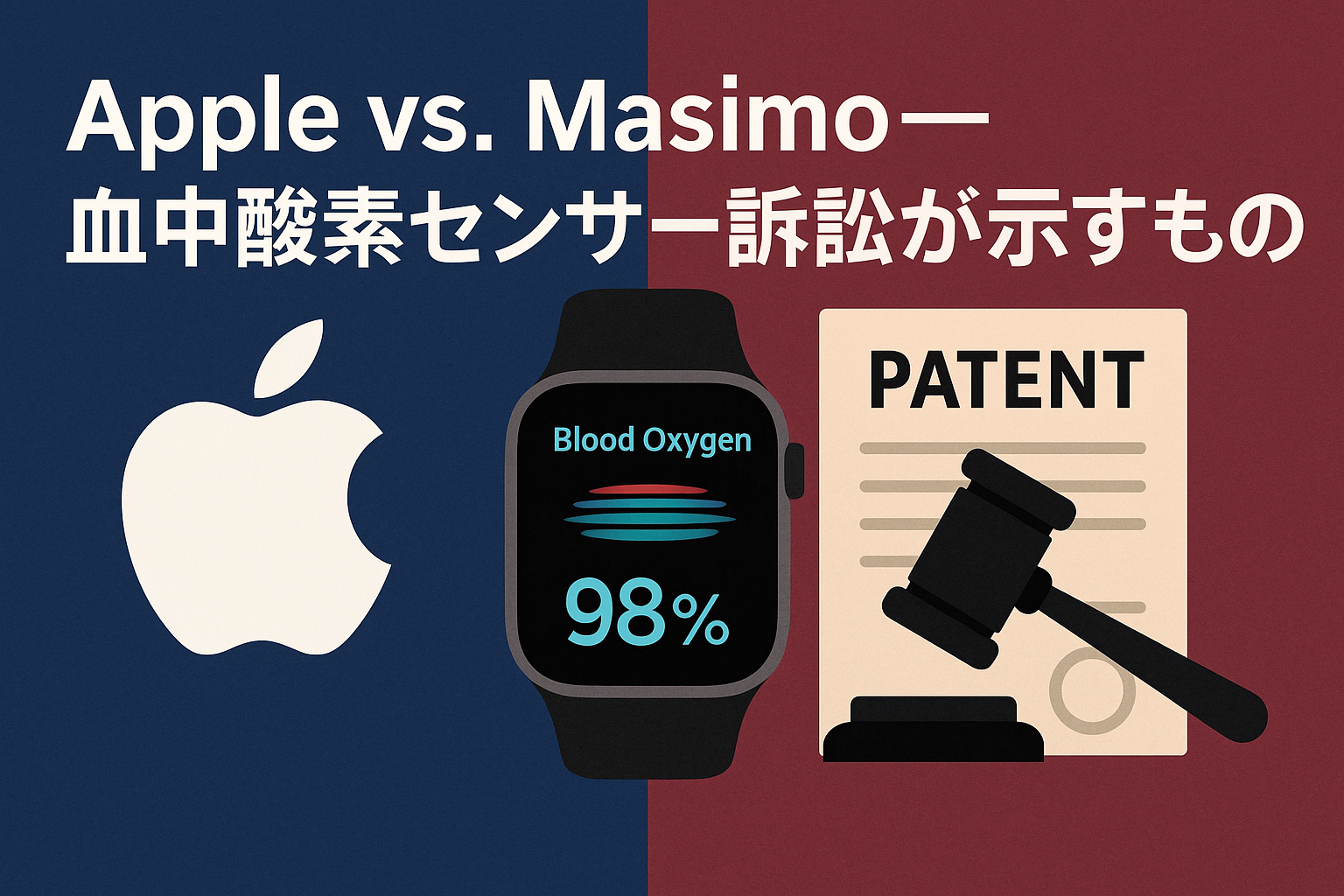In a patent lawsuit over the blood oxygen saturation measurement feature in the Apple Watch, a U.S. federal jury sided with medical technology company Masimo, ordering Apple to pay approximately 98 billion yen. As the wearable market enters a mature phase, this ruling represents more than a corporate dispute—it symbolizes a broader challenge in an era where the boundaries between medical technology and consumer devices are becoming increasingly blurred.
An Era Where the Line Between Medical Technology and Consumer Devices Fades
Apple has been strengthening the healthcare capabilities of the Apple Watch year by year, venturing into areas traditionally handled by medical devices—such as ECG monitoring, arrhythmia detection, and continuous blood oxygen measurement.
Masimo, on the other hand, is a pure medical device manufacturer known for its highly precise biometric monitoring technologies used in clinical settings.
Although the two companies originated in different markets, the convergence of their technological domains has brought patent conflicts like this one to the forefront.
What the Verdict Suggests About the Importance of IP Strategy
In its statement, Masimo emphasized that “protecting intellectual property is critically important for developing technologies that benefit patients.” For medical technology companies, patents are a lifeline that allows them to recover R&D investments.
Apple, meanwhile, has responded directly, asserting that “many of the asserted patents have been ruled invalid” and that “the patents in dispute have already expired,” signaling its intention to appeal.
From this dynamic, several strategic points emerge:
- As medical technologies move into the consumer space, patent boundaries become easier to blur.
- Consumer electronics makers inevitably increase their contact with medical technologies as they strengthen health-related features.
- For medical device companies, the risk of imitation in the consumer market grows, making patent defense increasingly crucial.
In short, as technological progress dissolves the borders between sectors, battles over intellectual property will only intensify.
A Setback for Apple—and Its Implications for the Wearable Market
For Apple, the ruling carries significance beyond the financial amount. Blood oxygen measurement is one of the core features of the Apple Watch’s healthcare strategy. If the lawsuit results in functional restrictions or design changes, it may impact the device’s market appeal.
Potential ripple effects include:
- Other wearable makers strengthening licensing negotiations with medical technology companies
- Increased barriers to adopting medical-grade technologies, potentially slowing feature competition
- Expanded opportunities for medical device manufacturers to enter the consumer market
As wearable devices evolve into “health management platforms,” IP strategy is becoming just as important—if not more so—than product competition itself.
What Comes Next: Appeals and Continued Battles
Apple has made its intention to appeal clear, suggesting the litigation will continue for years. Masimo and Apple have already been engaged in several lawsuits over the past six years, and this ruling is only one chapter in their broader conflict.
The points of contention are wide-ranging: patent validity, technological uniqueness, similarities in implementation, and more.
Ultimately, several outcomes are possible:
- Settlement leading to licensing agreements
- Apple modifying its technical specifications
- A restructuring of collaboration models between consumer tech and medical technology companies
Conclusion
This ruling highlights intellectual property challenges that are becoming unavoidable as healthcare and technology continue to converge. The conflict between Apple and Masimo is not merely a corporate fight—it may be a sign of “new rule-making” in an era where medical technology is becoming increasingly democratized.
Readers should keep a close eye on how the litigation unfolds and how it may influence the future of the wearable market.

